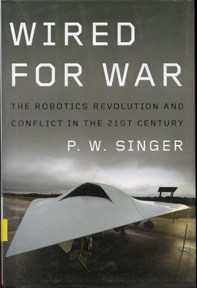|
|
|
|
|
|
TURNING DREAMS INTO REALITY
|
|
|
"There is a back and forth between dreams and reality. Science fiction offers the dreams, the engineers make it the reality, and the readers are the ones who pilot the technology in planes, cars, rockets, whatever."
Greg Bear is the author of more than thirty books and has won two Hugos and five Nebulas (the science fiction versions of Pulitzer Prizes). His most recent novel is Quantico, a thriller set in the "second decade of the War on Terror" about young FBI agents taking on a brilliant homegrown terrorist. The book flap captures it best: "It's the near future—sooner than you might hope."
Bear is especially well equipped to reflect on how science fiction doesn't just predict but also inspires real-world changes, as his name is frequently mentioned in the military research community. For example, an air force lieutenant colonel commented how he even footnoted Bear's work in a project proposal. By way of explanation he asks, "I mean, how many science fiction books have appendices and glossaries?"
|
|
 |
|
Growing up as "a Navy brat," who moved with his father from bases in California and Japan to the Philippines, Bear recalls that "in my living memory I don't know a time when science fiction wasn't in my life." He started writing at eleven years old and sold his first story at age fifteen. The next year he met his hero, science fiction writer Ray Bradbury, and his career as a writer was decided.
Since that time. Bear has been called the "best working writer of hard science fiction" by The Ultimate Encyclopedia of Science Fiction. His impact, though, is decidedly beyond the world of fiction. Bear has served on various political and scientific action committees and advises the U.S. Army, the CIA, Sandia National Laboratories, and Microsoft Corporation. Indeed, when we spoke. Bear was just back from headlining a government conference on biotechnology threats, inspired in part by his book Darwin's Radio.
Bear is also one of the core members of SIGMA, a "think tank of patriotic science fiction writers." SIGMA was started by Arlan Andrews, a writer who also worked at the White House Science Office. "If you don't read science fiction, you're not qualified to talk about the future," he said. Since the 9/11 attacks, SIGMA has worked closely with the Department of Homeland Security, and influenced it in particular to set up the Homeland Security Advanced Research Projects Agency, or HSARPA. A parallel to the Defense Department's DARPA, HSARPA spends about $7 million a year (1 percent of the agency's budget) on futuristic "high impact" projects. At a government conference where authors like Bear spoke in 2007, a government official defended the science fiction link to policy. "Congress asks me how can I afford to roll the dice with 1 percent of the taxpayers' money," tells Jay Cohen, head of Homeland Security's Science and Technology Directorate. "I say there are bad people in the caves of Tora Bora who are rolling the dice with 100 percent of their money."
Bear sees the influence of his work and his access to policymakers as coming in part from the focus on conflict. Referring to the many military readers of his work, he says, "If you lead the life, you tend to choose to read fiction about it." He also sees science fiction's influence spreading via its crossover into popular techno-logic thriller authors like Tom Clancy and Dan Brown, who are especially popular among military readers.
This fandom extends to the top. "There is a pretty striking amount of government officials that read science fiction," Bear says. "Harry Truman loved science fiction. He was an 'other planets' type of guy.... Reagan liked the older writers like Jules Verne and Edgar Rice Burroughs. Reagan even gave [promotional] quotes to writers and was not averse to receiving papers from them, when he was president."
He goes on to note that, as someone who leans left in his politics, he's somewhat disappointed that recent Democrats tend to be less likely than the Republicans to be science fiction fans. "They seem to be more like FDR and get into the legal thrillers and mysteries
|
|
|
|
|
|
|
|
|